Get Growing with Mickey Rathbun: Paving over historic beauty: A history of the White House Rose Garden that Trump plans to rip up
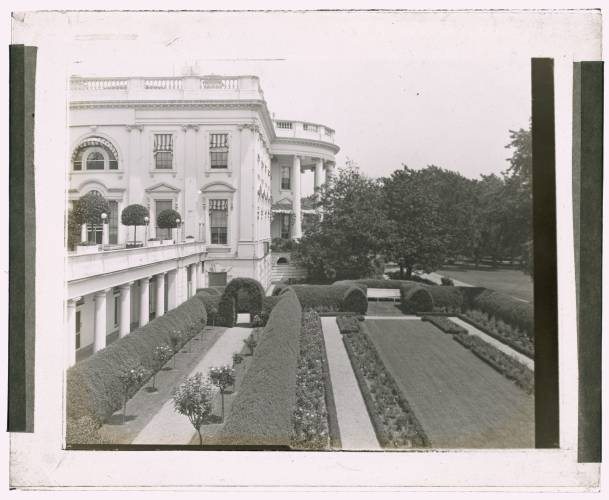
A 1921 image of the rose garden that replaced the former west colonial garden at the White House. Library of Congress/Frances Benjamin Johnston
| Published: 04-04-2025 10:16 AM |
I wonder how closely Joni Mitchell follows the news. Did the headline “Trump Turns the White House Lawn into a Tesla Showroom” catch her eye? Trump’s craven gesture is about as close as you can get to “paving paradise and putting up a parking lot.”
Earlier this month, Trump, perhaps tired of committing ruination on a global scale, turned his sights closer to home. He created a Tesla showroom on the South Lawn of the White House where Elon Musk’s vehicles could be displayed in the hope of jacking up sales. Of course, DJT, arriving with Musk after a stroll through the Rose Garden, stepped up to buy a shiny red S model, sticker price $88,490 with all the trimmings. For Trump this was a twofer: The stunt was an effort to help Tesla CEO Elon Musk, whose sales have slumped badly since he started to wield his chainsaw on the federal government. And it created a perfect photo op: Trump grinning from the driver’s seat next to Musk, with an even bigger grin under his MAGA hat.
But Trump’s South Lawn parking lot is just a warm-up act for a larger desecration of the White House grounds. Several weeks ago, he announced his plan to rip up the grass in the Rose Garden, perhaps the White House’s most cherished space, and pave it so that it more closely resembles his patio at Mar-a-Lago, his members-only club in Palm Beach where he likes to entertain well-heeled well-wishers and VIPs.
The Rose Garden, which sits just outside the Oval Office and the Cabinet Room on the White House’s south side, has a long and colorful history. In the 18th and 19th centuries, the south side of the White House was a hodge-podge of stables, workshops and servant quarters as well as a milk house and ice house. There was also a vegetable garden planted by President Grant.
In its first incarnation as a garden, the space housed a series of Victorian conservatories, reflecting the popular 19th-century gardening trend. (Emily Dickinson’s conservatory at the Homestead is a local example). A square glass conservatory for roses was called the “Rose House.”
When Teddy and Edith Roosevelt moved into the White House in 1901, Edith had her heart set on replacing the stable area near the south portico with a Colonial-style garden, planted only with old-fashioned flowers such as sweet peas, black-eyed Susans, quince and fragrant jasmine, the scent of which she and the President could enjoy from their rocking chairs on the portico. The garden plan was quite ambitious, calling for the removal of the glass conservatories to be replaced by a series of paisley-shaped flower beds.
The next first lady to try her hand at the White House garden was Ellen Wilson, wife of President Woodrow Wilson. In 1913, with the assistance of noted landscape architect George Burnap, she established the first official White House Rose Garden, which included a walkway lined by privet hedges that created a formal approach to the West Wing. In 1935, President Franklin D. Roosevelt commissioned Frederick Law Olmstead Jr. to update the space to improve security and functionality. He also brought in cast-iron furniture, providing visitors the opportunity to sit and admire the garden around them.
The most famous makeover of the Rose Garden, however, came in 1961, when President Kennedy and his wife, Jacqueline, asked their close friend Rachel Lambert “Bunny” Mellon to overhaul the garden area. As Mellon explained in an article she wrote titled “President Kennedy’s Rose Garden,” the President and First Lady were inspired by the many opulent gardens they had seen on a recent state visit to France. According to Mellon, it was the President, not the First Lady, who conceived and spearheaded the effort. “He recognized the importance of gardens surrounding an official residence and their appeal to the sensibilities of all people,” wrote Mellon. His vision was to have a garden that would “appeal to the most discriminating taste” and also provide a place to “hold a thousand people for a ceremony.”
Article continues after...
Yesterday's Most Read Articles
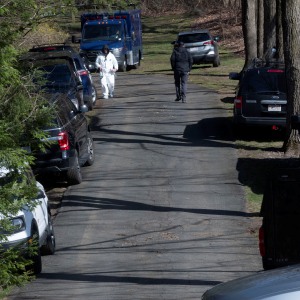 FBI conducts court-authorized investigation at Hockanum Road home in Hadley
FBI conducts court-authorized investigation at Hockanum Road home in Hadley
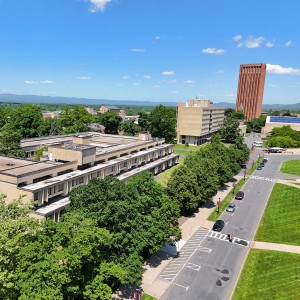 ‘Whole campus’ approach: UMass working to help six students whose visas, status were revoked
‘Whole campus’ approach: UMass working to help six students whose visas, status were revoked
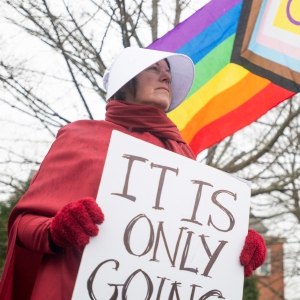 ‘Hands Off’ protest: 5,000 people in half-dozen Hampshire County communities protest against Trump policies
‘Hands Off’ protest: 5,000 people in half-dozen Hampshire County communities protest against Trump policies
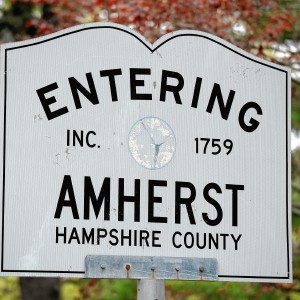 Amherst finance director to return to UMass
Amherst finance director to return to UMass
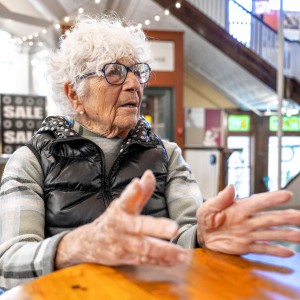 ‘Delightful’ Northampton store shopping guide Jane Hertz, 88, seeking next gig
‘Delightful’ Northampton store shopping guide Jane Hertz, 88, seeking next gig
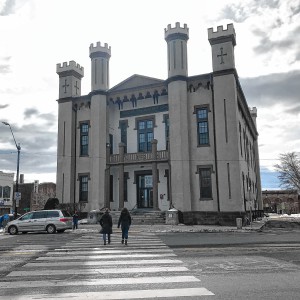 Several candidates express interest in seats on Northampton council, School Committee
Several candidates express interest in seats on Northampton council, School Committee
Mellon’s plan was to create a large lawn anchored by four magnolia trees and edged on both sides with a 12-foot wide border where small crabapple trees, roses and other flowers could be planted. Mellon noted that “the President loved flowers and asked if a variety of other types could be mixed with the roses.” He told Mellon that he had read the published garden notes of Thomas Jefferson and hoped that flowers from Jefferson’s years could be included. When the beds were finally prepared, she planted them with spring bulbs such as muscari and tulips, replaced in the summer with a colorful mix of annuals and perennials including salvia and pale pink geraniums. In the fall, these were lifted for the planting of late season flowers such as anemone and chrysanthemums.
To accommodate ceremonial occasions, President Kennedy had the steps near his office redesigned so they could serve as a stage where he could stand with dignitaries and White House honorees. Opposite the steps was a flagstone terrace under Andrew Jackson’s historic Magnolia Grandiflora, where the president could entertain smaller groups of guests. While Mellon was working, the president stopped by frequently to ask how the garden was coming along. “It was truly President Kennedy’s garden,” she wrote. “His concern for the growth and wellbeing of this garden was never ending.”
The Kennedy Rose Garden had been mostly left alone until Trump’s first presidency, when Melania wanted to put her own personal stamp on the White House Rose Garden. This was highly controversial. Some observers praised Melania’s plans to replace the failing crab apple trees with white roses and to install better drainage for the lawn. Others labeled her changes as tasteless and insensitive. But Melania’s work was nothing compared to what Trump now has in store for the iconic space.
With Trump’s myriad outrages – slashing budgets, cozying up to Putin, appointing a vaccine denier as head of HHS – the degradation of the White House grounds seems like small potatoes. But it represents something much larger: Trump’s blatant violation of President Kennedy’s visionary notion of the Rose Garden as an ceremonious yet beautiful space befitting the ideals of the American presidency.
Mickey Rathbun is an Amherst-based writer whose new book, “The Real Gatsby: George Gordon Moore, A Granddaughter’s Memoir,” has recently been published by White River Press.






 ‘We’re here! We’re queer! We’re ready to cheer!’: New queerleading team hopes to perform at queer sporting events in the Valley
‘We’re here! We’re queer! We’re ready to cheer!’: New queerleading team hopes to perform at queer sporting events in the Valley ‘Spaces that allow the imagination to be fully realized’: 33 Hawley hosts two fundraising events this month
‘Spaces that allow the imagination to be fully realized’: 33 Hawley hosts two fundraising events this month Arts Briefs: Classical at UMass, singer-songwriter in Easthampton, and more
Arts Briefs: Classical at UMass, singer-songwriter in Easthampton, and more Speaking of Nature: Cute as a killdeer: The killdeer have just arrived and are busy setting up territories
Speaking of Nature: Cute as a killdeer: The killdeer have just arrived and are busy setting up territories
